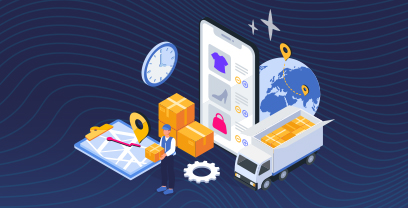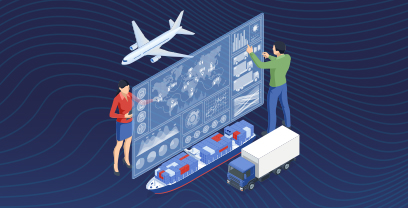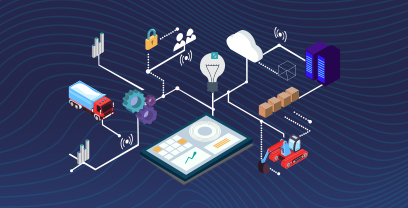Leading, high-performing procurement organizations share one common trait–they consistently prioritize a holistic and integrated approach to Supplier Management. In fact, they go beyond simply supplier management, what they do is Supplier Engagement. Aligning suppliers to overall Procurement and broader business strategy is critical to create sustained long-term value.
Successful industry leaders have built strong supplier engagement foundations to power more effective and valuable procurement practices. In doing so, they have improved supplier collaboration and created a greater capacity for resilience, innovation, and continuous improvement.
How do these organizations build their supplier management programs?
First, let’s define Supplier Management aka Supplier Relationship Management (SRM), Supplier Lifecycle Management (SLM), Supplier Risk, and Performance Management (SRPM).
Supplier Management is not limited to the transactional nature of a business relationship (purchase orders, catalog items, invoices, etc. ) or a contractual relationship. A more effective and comprehensive approach to supplier management involves assessing the nature of supplier relationships, setting appropriate risk and performance boundaries, and managing efficient business processes to maximize value.
As The Hackett Group detailed in their 2022 Supplier Relationship Management Study, SRM is the proactive and coordinated management of suppliers to:
- Manage and improve supplier performance
- Manage and mitigate the inherent risk of supplier relationships
- Trigger internal business processes (e.g.., innovation) with supplier capabilities
When supplier management operates in a silo–disconnected from all other procurement processes (from sourcing to payment), it captures only a fraction of the value. Integrated or Holistic Supplier Management creates sustained value. Of course, many organizations are far down the digital procurement transformation path and already have some or all of Source-to-Pay (S2P) digitized. In these cases, organizations should look to add-on a layer of supplier management.
Why is Holistic Supplier Management important?
Holistic Supplier Management can provide value beyond sourcing and Procure-to-Pay savings. It can turn supplier risk and inefficiency into a source of efficiency, innovation, and competitive advantage.
Often, inefficiencies are created in sourcing or Procure-to-Pay from inaccurate supplier information, payment delays stemming from inaccurate supplier master data, inconsistencies of supplier master data across systems, out-of-date credentials, disconnected supplier risk information, etc. With a 360-degree view of all supplier interactions and activities, you will have transparency into every part of the Source-to-Pay process in real-time.

Most spend management or S2P solutions severely lack strong supplier management capabilities. What’s more, very few can tackle the challenge of managing, maintaining, and feeding ERPs with accurate supplier master data.
A strategic and holistic approach to supplier management contributes to overall business strategy by:
- Establishing supply assurance and mitigating disruptions
- Building more resilient supply chains that withstand volatility
- Supporting growth plans with new product innovation or entry into new markets
- Sustainability initiatives to reduce scope 3 carbon emissions
- Accurate and quality supplier master data
An effective SRM framework provides a set of principles, processes, and tools to establish a governance structure and manage ongoing operations during the lifecycle of a supplier.
The Hackett Group detailed Ivalua’s SRM framework to cover:
- Supplier Stratification: Stratification of the supply base creates effective resource prioritization and relationship management.
- SRM Governance: Formal governance structure and roles clarify supplier interactions and internal collaboration. Defining Role-based skills = effective SRM team staffing.
- Performance / Risk Management: Consistent performance management process and tools using incentives and penalties to drive improved supplier performance.
- Supplier Development: Formal programs for advancing supplier capabilities and improving joint processes to create long term value.
The Hackett Group also described the important role of technology in building a strong SRM foundation.
Below, a chart describes how Ivalua approaches Holistic Supplier Management.

Embarking on a sustained value journey
Holistic Supplier Management establishes a strategic supply chain strategy that can deliver sustained value, lower risk, and improve performance. Every organization has its unique needs, and reaching best-in-class should not be compromised by technology limitations. Market share and bottom-line profitability are all at risk when supplier strategy is not aligned with business strategy.
Below, we list the simple steps toward implementing a Best-in-Class SRM Program–starting with a solid foundation of processes.
Create tailored onboarding processes to balance speed & risk
- Determine policies, requirements, and processes for onboarding different segments of suppliers
- Which stakeholders are involved and what is their role?
- Establish standards and due diligence process
Establish a mechanism to communicate & collaborate with suppliers
- A supplier portal designed to meet your needs.
- Self-registration, information gathering & validation /approvals
- Segmentation & qualification
- Collaboration / communication / workflows back and forth
Build risk & performance into all processes
- Establish risk and performance metrics (internal + external data)
- Tailor actions, workflows based on your business
- Set rules for risk/performance assessments, alerts, actions
- Complete S2P process informed by SRM
Digitize supply chain collaboration
- For strategic direct materials purchases, collaboration and communication with suppliers is paramount
- Enable seamless collaboration on critical supply chain transactions
- Mitigate supply disruptions with effective communication of forecasts
Focus on data quality, consistency & reliability
- 360-degree view of all supplier activity and interactions
- Establish single source-of-truth for supplier master data
- Keep all other systems in sync
Unlocking Sustainable Procurement Value with Holistic Supplier Management
The main takeaway? Drive more value out of your supplier relationships by focusing on supplier segmentation, governance, supplier performance management, and data quality. Once you commit to change and identify your long-term goals , you can start successfully building strategic relationships with your suppliers.
Ready to create long-term value for your organization? Discover Ivalua’s industry Holistic Supplier Management Solution, click here




